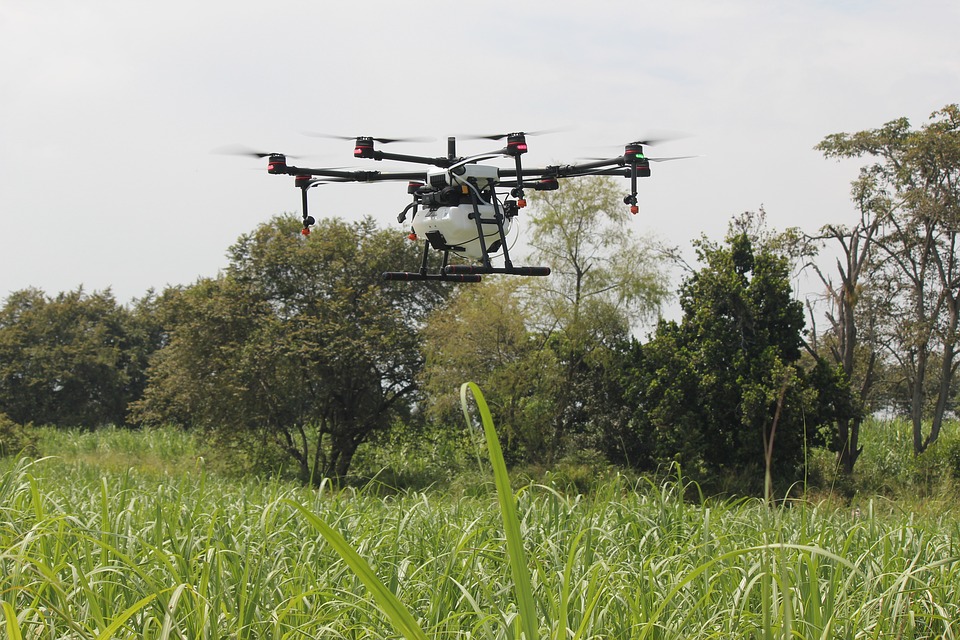If your city, county, state or business is in the market for a drone or your business is looking for opportunities to bid on proposals to sell a drone or offer training, the demand is growing. The Trump administration is launching a pilot program that seeks to expand the use of aerial drones, a move that could increase the demand for aircraft in several different industries like construction, law enforcement, disaster response, home delivery and more.
President Donald Trump signed a memorandum on Oct. 25 that directs the United States Department of Transportation (USDOT) to set up a pilot program that seeks to expand the use of aerial drones. The USDOT will arrange the testing with at least five states, localities or tribal groups that submit proposals for a wider use of unmanned aircraft systems, or UAS.
Under Trump’s directive, the Federal Aviation Administration (FAA) and USDOT could grant waivers for restrictions that now, for example, prohibit flights over people, at night and beyond the line of sight of the drone operator. Testing will occur in designated zones that could cover flights up to 200 feet above ground, but the Transportation Department could approve testing up to 400 feet. FAA last year issued a rule setting limits on commercial use of small drones-those weighing less than 55 pounds. Pilots of such aircraft must be registered with the FAA and pass an aeronautical knowledge test.

From Sept. 2012 until 2016, there has been UAS testing at sites in New York, Texas, Virginia, North Dakota, New Mexico, Alaska and Nevada. Data collection and analysis will assist in creating safety related metrics, and help draft the final report to congress due in fiscal year 2017. Earlier this month one of seven FAA unmanned aerial systems (UAS) testing sites began searching for partners to assist with testing.
The Northeast UAS Airspace Integration Research Alliance opened an airspace corridor in upstate New York last month where drones and a drone traffic control system can be tested. The coalition published a request for qualifications (RFQ) to find a partner to participate in a program the state will infuse with up to $30 million by 2022.
Vendors will be evaluated based on expertise, experience, their approach to project management and their financial and bonding capacity, among a host of other criteria listed in the RFQ. The response period closes on Nov. 30.
The loosening of regulations by the FAA has resulted in more drone use by first responders. They must register all of their drones and are banned from conducting night-time operations (unless they have a special waiver) or missions where the operator loses sight of the drone that he or she is controlling. On top of these federal rules, states are also putting limits on how drones can be used by law-enforcement agencies. According to the National Conference of State Legislatures, a bipartisan research group, 18 states require such agencies to seek search warrants before using drones for surveillance purposes.
The Culver City Police Department in California could have drones by the end of this year. The City Council approved an appropriation of $70,000 for the department to purchase equipment for the drones during this year’s budget negotiations. The use of the unmanned aerial vehicles (UAV) will be a joint effort between the police department and the fire department. The department is seeking to purchase two operational drones and two that would be used for training purposes. The police department hopes to have them in place by the end of the year or next spring. Drones can be used when officers are searching for suspects in dense or darkened areas and places where it might be difficult for officers to access.
The Warren Police Department plans to use a federal grant and drug forfeiture funds to buy an unmanned aerial vehicle. The tool will be used in situations such as barricaded gunmen, surveillance of suspects and assessing the extent of damage from flooding or other natural disasters. Police officials are looking for a drone that has a thermal imaging camera, uses global positioning coordinates that a drone operator can send directly to a location to capture images and return, and a mounted camera that can zoom in on a license plate from about 300 yards, lock in on it and follow the vehicle while taking video.
The Fountain Police Department in Colorado has two drones that are used in daily operations and has plans to obtain three more. The department utilizes the drones for traffic accident reconstructions or for things like crime scene recreation and aerial photography.
The unmanned aerial vehicle force is strong in Arkansas. The North Little Rock Police Department, Pulaski County sheriff’s office, Sherwood police and Benton County sheriff’s office have purchased drones and have trained or are seeking FAA-approved training for officer pilots. Law enforcement personnel say that using a drone is much more cost effective than using a helicopter. North Little Rock now owns five drones using just over $19,000 in money seized through asset forfeiture in criminal cases. As the benefits of this technology spreads, more police departments in Arkansas will begin requesting drones for their daily activities.
Salinas city staff in California have put together a set of guidelines on how the city can use drones for non-emergency activities. The draft Unmanned Aerial System Policy would govern how city departments, outside of police, can use the drones. The UAVs can be used to check on contractors’ traffic counts, which are used to assess the busiest streets. The drone could be used for surveying, parks, planning purposes, urban forest management and documenting impacts of disasters for Federal Emergency Management Agency requests. It can come in handy for certain situations, such as mapping hot spots in a structure fire without putting firefighters at risk.
SPI’s government contracting consultants have decades of experience and personal relationships at all levels of government. Learn how they can help your company grow your business by contacting them today.
